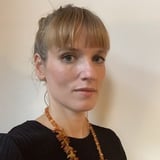Summary
In this Q&A session, you'll hear how former clinical researcher and PhD scientist, Clemens Janssen, is running research at 15x speed, supporting the needs of Nutrisense, an health tech company. As the first researcher, Clemens will share how he's built a research culture with training, standardized processes, and templates.
Key Insights
-
•
Transitioning from academia to corporate research is driven by the desire for faster impact despite adapting to a new pace.
-
•
Ad hoc research without formal processes limits organizational buy-in and impact.
-
•
Gaining buy-in from leadership is key to securing budgets, tools, and resources for research.
-
•
An ops-first approach to UX research helps scale research activities and onboard new team members efficiently.
-
•
Empowering product managers and other teams to conduct quality research increases overall research throughput.
-
•
Training and interactive mentorship ensure scientific rigor and consistent research quality when delegating research tasks.
-
•
Storytelling with real user learnings helps shift perception of research from ad hoc to essential and pattern-driven.
-
•
Research proposals framed around saving time and reducing iterations resonate well with leadership.
-
•
Building a shared codebook and involving interview teams in coding fosters consistent qualitative data analysis.
-
•
Even with a single researcher, implementing research Ops can enable multiple parallel research tracks.
Notable Quotes
"I transitioned out of academia because I wanted to work faster and create immediate impact rather than slow, layered processes."
"Research is actually a sales role – you have to show off a little to get buy-in from the top."
"People started asking if a pattern we'd seen in one user occurred in others, and that led to formalizing qualitative analysis."
"Without buy-in, you can’t get budgets approved or tools put in place to grow research practices."
"Ops-first means standardizing processes so we can scale and onboard new team members quickly."
"I can’t work 24 hours a day; efficiency and empowering others to do some research is how I stay effective."
"Before giving someone access to research tools, we do a 60-minute one-on-one training to cover the essentials."
"It’s like knowing how to drive a car doesn’t mean you can drive a semi; research has do’s, don’ts, and methodologies."
"If we test now, we’ll save two or three iterations waiting for organic user feedback later."
"Creating shared coding schemes and having teams do first-pass coding helps maintain consistency in qualitative analysis."
Or choose a question:
















More Videos

"In a usability session, the biggest challenge is not to talk at the same time the screen reader is talking."
Sam ProulxSUS: A System Unusable for Twenty Percent of the Population
December 9, 2021

"Government is seven plus years behind industry – not bleeding edge, more like the dull butter knife edge."
Michael LandEstablishing Design Operations in Government
February 18, 2021

"Going from 100 to 200 people, suddenly product managers started hearing from a dozen people a week with conflicting requests."
Shipra KayanHow we Built a VoC (Voice of the Customer) Practice at Upwork from the Ground Up
September 30, 2021

"A workshop helps people map their skills, identify gaps, and make specific goals for career jumps."
Ian SwinsonDesigning and Driving UX Careers
June 8, 2016

"The trusted partnership between the chief of staff and the executive is critically important."
Isaac HeyveldExpand DesignOps Leadership as a Chief of Staff
September 8, 2022

"We categorized all our work into may-do, must-do, and desire-to-do buckets to better allocate our efforts."
Amy EvansHow to Create Change
September 25, 2024

"Flight is about adaptability – being ready to switch gears and pivot quickly in a global and changing environment."
Kate Koch Prateek KalliFlex Your Super Powers: When a Design Ops Team Scales to Power CX
September 30, 2021

"If you do anything with other people, you’re creating culture."
Dave GrayLiminal Thinking: Sense-making for systems in large organizations
May 14, 2015

"Curation is super important, but also super hard."
Matt DuignanAtomizing Research: Trend or Trap
March 30, 2020

















